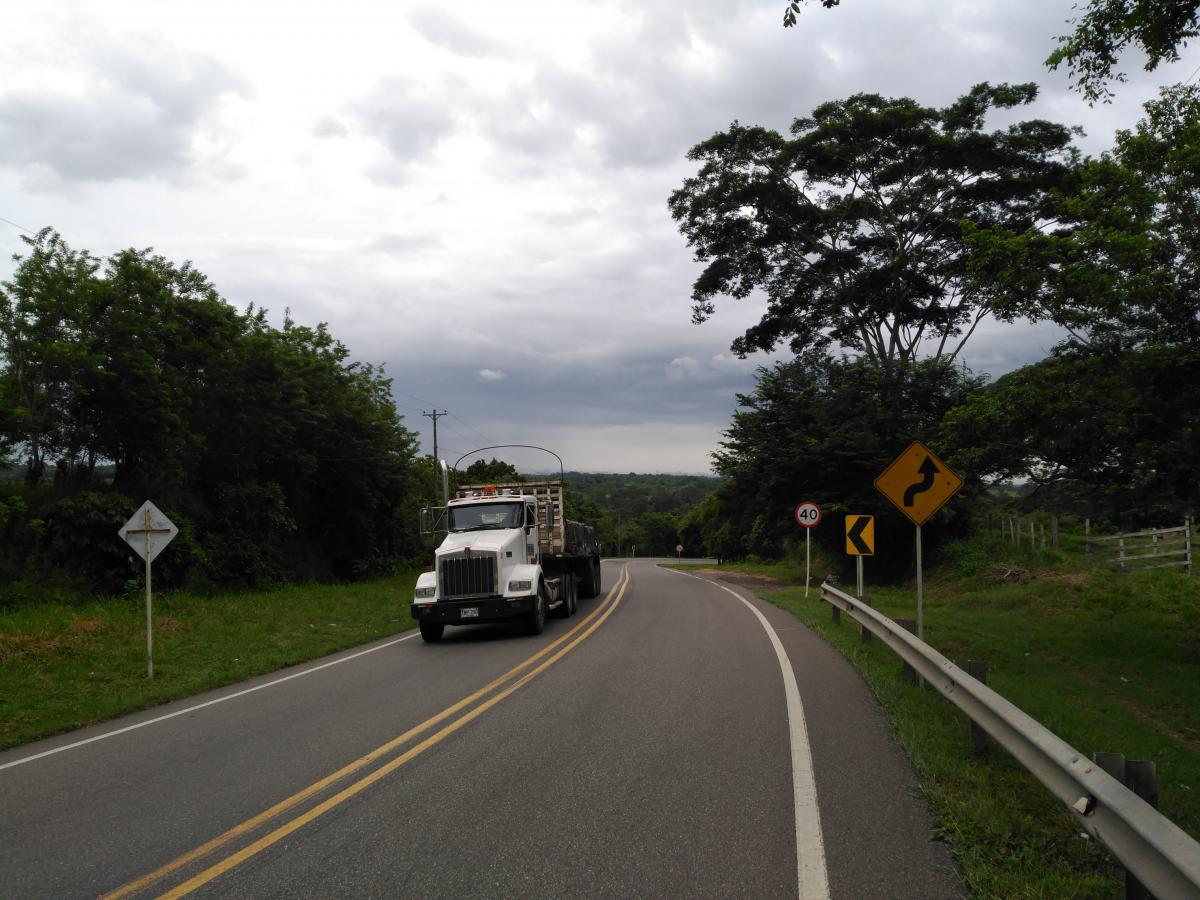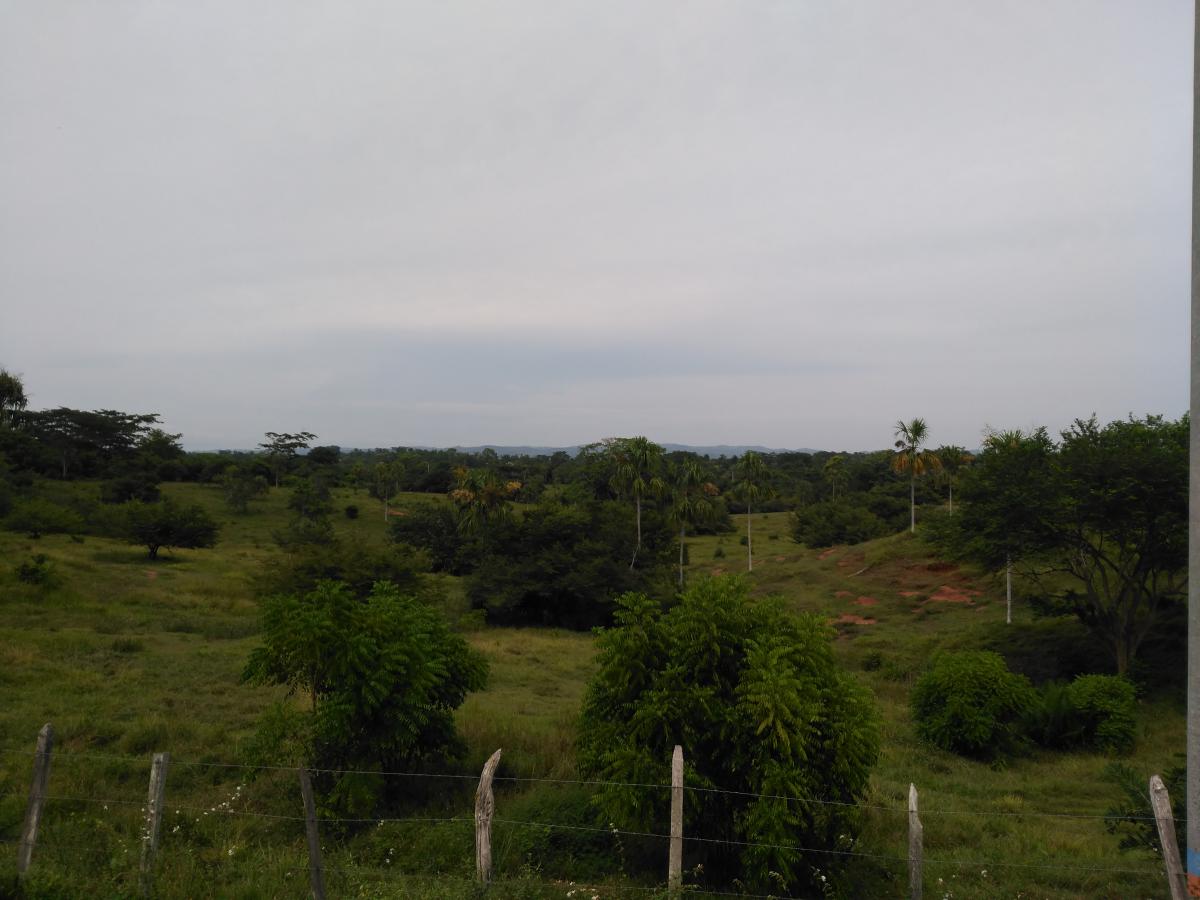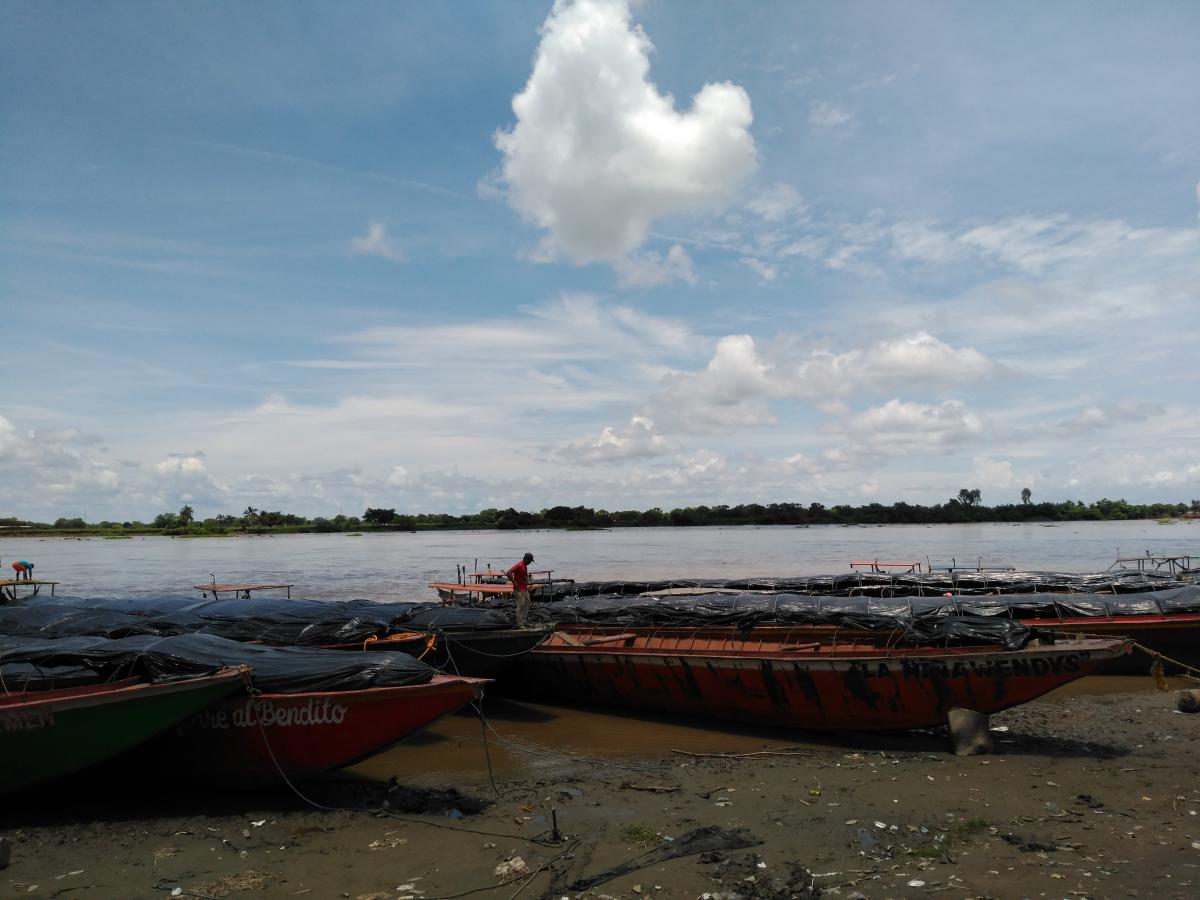Planeta Rica – Sincelejo – Magangué
I left Planeta Rica on 18 August, initially with the aim to get to Sahagún (72km). It was slightly cooler that day, with some light rain initially. My idea was to get to Sahagún, a small town in the direction of Sincelejo, but also half way to Coveñas, on the Caribbean coast. With the weather being less hot at least initially the day began very agreeable, and the route was pretty easy.


Shortly before arriving at Sahagún I received a call from a friend from Paz Caribe, a group working for peace in Sincelejo and the region. I know some of the people of the group probably since 2007, and had been to Sincelejo several times between 2007 and 2010. I arrived at Sahagún shortly after 11am, and talked to my friend from Paz Caribe. Spontaneously I decided to continue to Sincelejo the same day (another 45km. I finally arrived at Sincelejo at 3pm, and went to the house of Paz Caribe and my friend.
It was very nice meeting after so many years, and we chatted a lot during the afternoon. Some more people from the group arrived in the evening and we chatted some more.
The next day there was a workshop about the peace process in the region after the agreement between the FARC and the Colombia government. It was a workshop for women, but with a few men attending, and so I had no problems observing the workshop. They presented some of the aspects of the agreement: land rights (not very satisfying), democracy and citizen’s participation (some improvements, but things are missing), and the issue of the victims of 50 years of armed conflict.

The theme of post-conflict justice is quite complicated. One part is a Truth Commission, another part an office for the search of persons presumed missing, and then there is a “Special Justice for Peace”. I don’t really know how it works, but it is a system outside of the normal criminal justice system. Additionally, at least in theory all this also includes compensation for victims and reparations – including from the side of the FARC.
On the one hand there is a lot of hope, or – as one woman said – the victims want to again trust the State. There is a lot of good will, above all from the victims of the conflict, but I’m not sure there is sufficient patience. I expect the process to be slow, and what people need are some improvement now, a reduction of violence now (yes, there is some reduction, but not from the paramilitaries – in façt, assassinations of leaders of farmer organisations or human rights defenders have increased in the last two years). But it was good to see so many people who want to create a peaceful world.
I think it is important to recognise that the peace agreement does not solve anything of the conflict. Rather, it transforms the form of dealing with the conflict from using arms to other forms of dealing with a conflict: from institutional politics to social mobilisation. In this sense, the agreement does not do more than open up a space for civil society, and the workshop was an example how this civil society is preparing itself to make use of this space.
On Sunday, 20th August I took the opportunity of a lift by car to San Pedro, half way between Sincelejo and Magangué. This allowed me to not leave that early (and break my habit). I arrived to Magangué shortly after 12pm, and after taking some natural fruit juice I looked for a hotel. It seems there is not really any agreeable hotel in this town, and I can’t really recommend any. I stayed too long in the hotel to take a shower and rest a bit, and when I finally left the hotel almost everything was closed (on a Sunday at 14:30). I found a restaurant nearby to eat something, but with the streets almost completely empty I also didn’t feel too safe.


I returned to the hotel and used my time to write, and to translate some blog entries into German...
- Alana Queer's blog
- Log in to post comments
 Español
Español
